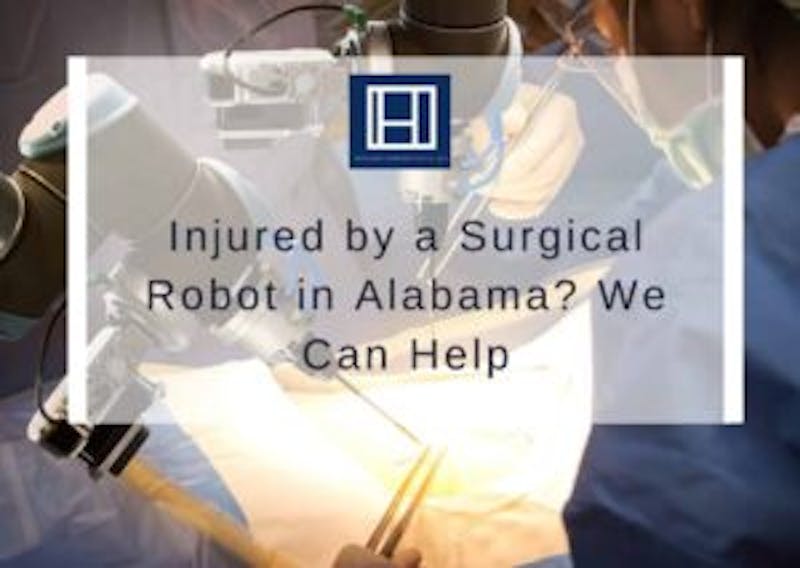
More surgeons than ever are using surgical robots to safely and quickly perform surgeries. Surgeons frequently use robots to repair heart valves and perform knee and hip replacement surgeries. Robots are effective in surgeries because they limit the spread of infection and other types of biological contamination. Robots also limit the amount of human-to-human contact. During the coronavirus pandemic, many hospitals have relied on surgical robots to safely operate on patients and decrease the risk of the COVID-19 virus spreading.
Unfortunately, robots are not fail-proof. They may limit scarring, improve surgical error rates, and prevent the spread of coronavirus. However, there have been injuries and deaths associated with the use of surgical robots. Patients still rely on medical doctors to effectively use surgical robots. The medical doctors in charge of the surgery are human and can make mistakes or act negligently. When negligence causes a surgical robot injury, the victim may have the right to compensation through a medical malpractice lawsuit.
Examples of Surgical Robots Injuries
Despite surgical robots becoming more popular than ever, many experts warned that we do not have enough research into surgical robots’ safety. Some medical experts call for new safety measures that address advanced techniques in the operation and design of surgical robots that will prevent injuries in the future.
A study conducted in the United Kingdom revealed that surgical robots were linked to at least 144 patient deaths. Over 14 years, the use of surgical robots also caused over 1,000 injuries. In some cases, broken instruments fell into the patient’s bodies, causing additional injuries or infection. In other cases, electrical sparks from the surgical robots caused tissue burns.
Fatalities related to surgical robots are more common when the surgery involves the lungs, heart, head, or neck. Urological and gynecological procedures are less risky when conducted by surgical robots. In many cases, heart and lung procedures are more complicated than other surgery types and require less expertise and experience.
Schedule a Free Legal Consultation Contact Us
Broken Parts Can Cause Injury or Death
During surgery, time is critical. The longer a surgery takes, the greater the risk of complications such as infections or adverse reactions to anesthesia. In some cases, the study showed that system errors cost the surgery to last longer than the surgeon anticipated. Broken or malfunctioning parts can cause surgical procedures to take longer than necessary.
According to the FDA, only five of the 436 deaths were caused by technical errors during the surgery. The majority of the injuries involved burned or broken parts falling into a patient’s body. In other cases, the surgical robot would spontaneously turn on or off, causing 52 injuries and two deaths. Surgical robots can also begin making uncontrolled movements, injuring patients.
In other cases, surgeons lost the ability to see a clear video feed, making it impossible for them to operate precisely. Surgeons can see system error codes that block their view and cause the surgical robot not to operate correctly. Even though machines are more precise, they can be dangerous or even deadly to patients when they do not function properly.
Surgeons Need Extensive Training to Operate Surgical Robots
Using surgical robots is not easy. Just because a surgeon is highly skilled with manual surgical procedures does not mean he or she can skillfully operate a surgical robot. Using a surgical robot requires significant training. Some experts report that surgeons must perform 200 to 300 robot-assisted operations to become proficient in robotic surgical procedures.
Unfortunately, the manufacturer only requires surgeons to complete a two or three-day training course and observe some robotic surgeries with a surgical mentor before he or she can operate. The more complicated or rare the procedure, the more training a surgeon needs to use a surgical robot effectively.
Recovering Compensation After Becoming Injured by a Surgical Robot
If a surgical robot has injured you, you may be entitled to compensation. After you seek emergency medical attention, the best thing you can do is speak with an experienced medical malpractice lawyer. You may be able to bring a lawsuit against a physician who failed to obtain the proper training before using a robot during your surgery. In other cases, you can sue the hospital that performed your operation for failing to ensure the surgical robot’s safety.
Finally, you may be able to sue the surgical robot’s manufacturer for designing or manufacturing a defective product. Contact Heninger Garrison Davis as soon as possible to schedule a consultation with one of our experienced medical malpractice lawyers today.
